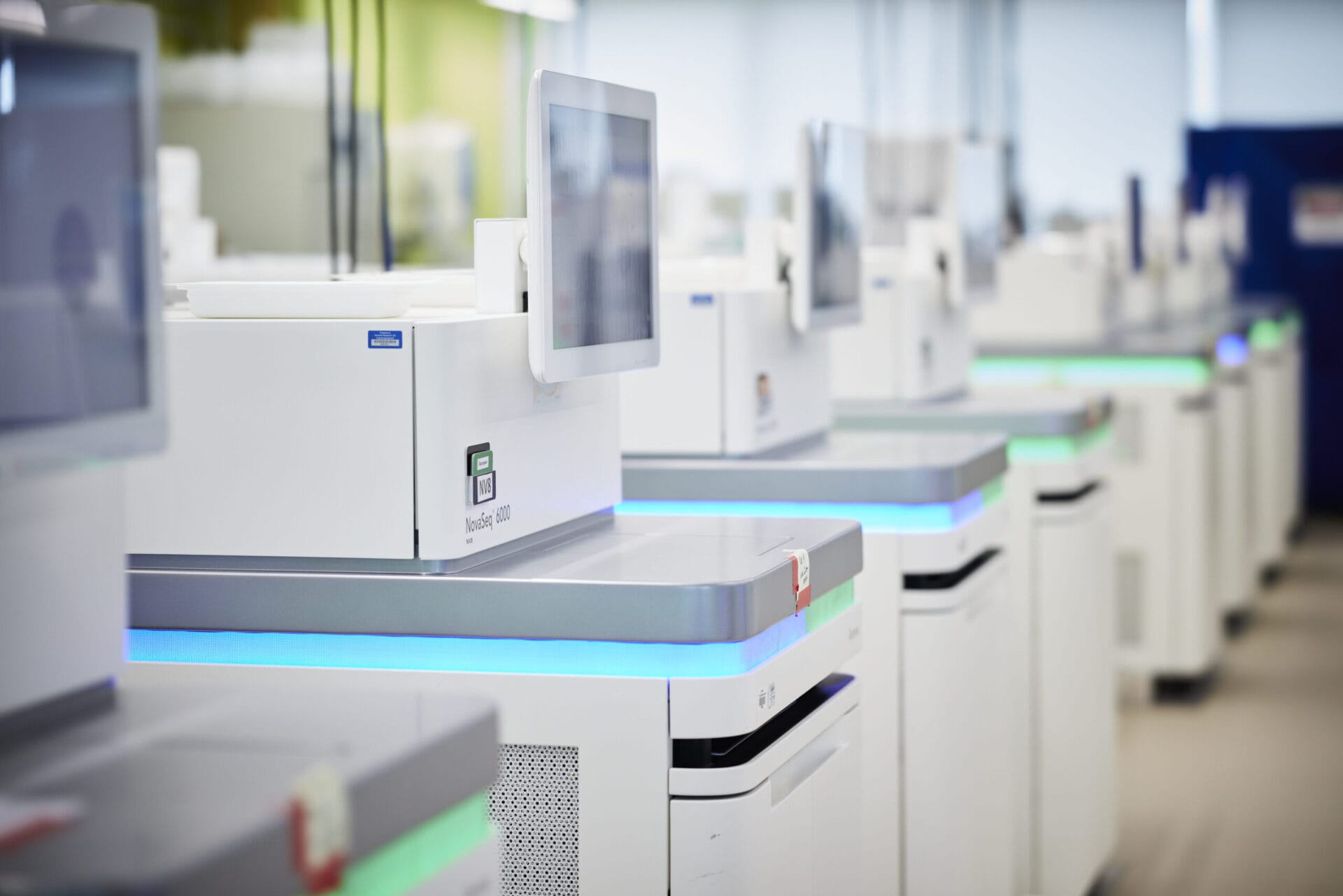What is DNA sequencing?

DNA sequencing is the process of working out the exact order of the four chemical building blocks – called bases – in a section of DNA.
- DNA sequencing is the process of determining the exact order of the four bases in a specific section of DNA.
- Its development has dramatically advanced what we know about genetics, leading to improved understanding of illnesses and helping doctors make informed decisions about treatment.
DNA sequencing
- DNA is made up of four building blocks, or bases – called A, C, G and T. The sequence of bases forms instructions for an organism’s cells to follow, including how to make all the proteins it needs to function.
- The human genome is made up of around 3.2 billion bases. Other organisms’ genomes are longer or shorter. For example, the fruit fly genome is around 180 million bases.
- DNA sequencing allows us to determine the exact order of bases in a sequence. This can tell us a lot of information about an organism’s genetics and the proteins its cells make to function.
- By sequencing individual genes and regions of DNA, all the way up to whole genomes, we are learning more about the role of genetics and genomics in biology, health and disease.
The history of DNA sequencing
- DNA sequencing began in the 1970s, enabling scientists to read the genetic code for the first time. Although a technical feat, early DNA sequencing was slow, labour-intensive and expensive, taking several years to sequence just one or two genes.
- Sanger sequencing, a more reliable, easier technique, was developed in 1977. With further advancements, this became the most widely used form of sequencing for the next few decades.
- In 2003, the first near-complete human genome was published, using Sanger sequencing as part of the Human Genome Project. This took around 13 years and cost around £2 billion.
- Sequencing technologies have evolved significantly in recent years, and we can now sequence an entire human genome in less than an hour. This includes from start to finish, rather than breaking it up into smaller, manageable chunks – something that’s only recently become possible.

This technology is advancing very quickly. The first near-complete human genome took 13 years to complete. Two decades later, in 2022, the Wellcome Sanger Institute produced a gold-standard human genome every 12 minutes.
The steps of DNA sequencing
1.
Sample preparation
DNA is purified from the sample, such as a cheek swab or a forensic sample. Often, specific regions are copied multiple times (known as amplifying) to reach high enough quantities.
2.
Reading the sequence
Different methods can be used to determine the order of each base. Read more about the different techniques here.
3.
Comparing to other sequences
The new sequence is compared to a reference sequence (eg that of the Human Genome Project) to see if there are any differences.
Innovation
DNA sequencing technologies have developed incredibly quickly over the past decade. Find out more about how these technologies have advanced, and what we can now do with them, in our DNA sequencing timeline.